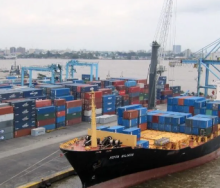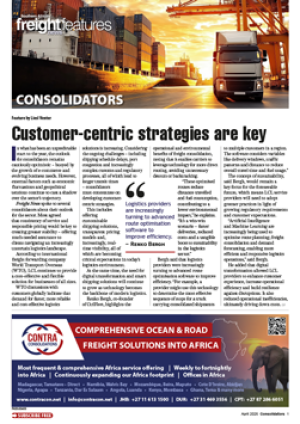In a world where disruption and market upheaval have become the norm, unflinching certainty about currency and market fluctuations is a crucial aspect for fastidious import and export trade decision-makers, says independent technical analyst, Frans de Klerk.
It’s easier said than done though, because how do you separate indices’ accuracy from all the background noise that can so easily divert a trader’s attention from what’s happening in real time?
De Klerk and his daughter, Christelle, who runs www.fransdeklerk.com (FdK), believe they have the answer and, if growing interest in their analysis is anything to go by, they have developed a method that can best be described as “grasping the graph”.
To help their subscribers track trends as it unfolds, FdK sends out a breakfast bulletin called ‘Candle of the Day’, followed up by a ‘Saturday Newsletter’ – a focused look at equities and contracts for differences, better known as CFDs.
In addition, traders also turn to FdK throughout the day for up-to-date currency views, especially vis a vis the rand to the US dollar, but including other currencies relative to specific trades.
“We have clients that do imports and exports right across the world and their business is taking out forward cover and securing trades at the best possible exchange rates to optimise transactions.
“Every morning they receive information that represents the dollar and the rand, but as the day progresses currency fluctuations can affect the local forex position, so they WhatsApp for the best exchange rate – be it the British pound, Botswana pula, Indian rupee or Russian rouble.”
Understanding where currencies could go is made easier through consistently analysing what clued-up investors do, Frans says.
It’s also what sets FdK apart from banks and advisers.
“Our analysis is entirely independent and objective, unaffected by our own profit motive. That’s why we don’t ask our clients what the size of any particular trade is as it could influence our objectivity. Because, unlike a bank or a financial adviser we don’t have our investment position to consider, we grasp the graph as it is and not how we want it to be,” says Frans.
“Accordingly, we provide pure analysis whereby our clients can make their own decisions, win or lose.”
In comparison to their approach, he explains, banks will look at fluctuations that benefit them and will, in keeping with their own profit motives, adapt their analysis and advice.
In this day and age of exponential technological progress and data gathering, often much to the confusion of traders overwhelmed by information yet who are expected to make an on-the-spot decision, it’s important to consider the value of technical advice with a human heart behind and not a digital pulse.
“There’s a lot to be said for artificial intelligence (AI) but our clients want independent analysis at any given time. They’re not interested in AI or what robots can tell them, and we don’t. We look at graphs as they play out, analyse what we see, and leave our clients to make their own decisions.”
Frans says it’s interesting that in the age of digitisation and disruption, human intelligence still saves the day when it comes to bang-for-your-buck decision-making.
“Algorithms and advisers with subjective motives don’t do market assessments based on human, emotional dynamics. We incorporate all of the possible impacts to make sure our clients have the best possible projections of emerging market currencies against dollar-dominated trades.”
According to Christelle, “the ‘Grasping the Graph’ concept is all about understanding an ECG of any financial instruments. It shows you the heartbeat of it. It identifies through support and resistance levels on the graph where the strength of the buyers or sellers are that allows one to assist with decision-making for the future”.
Combined with market indicators, it provides traders with an accurate tool to calculate the probability of import and export dynamics as they surge and slump on the graph, she says.













